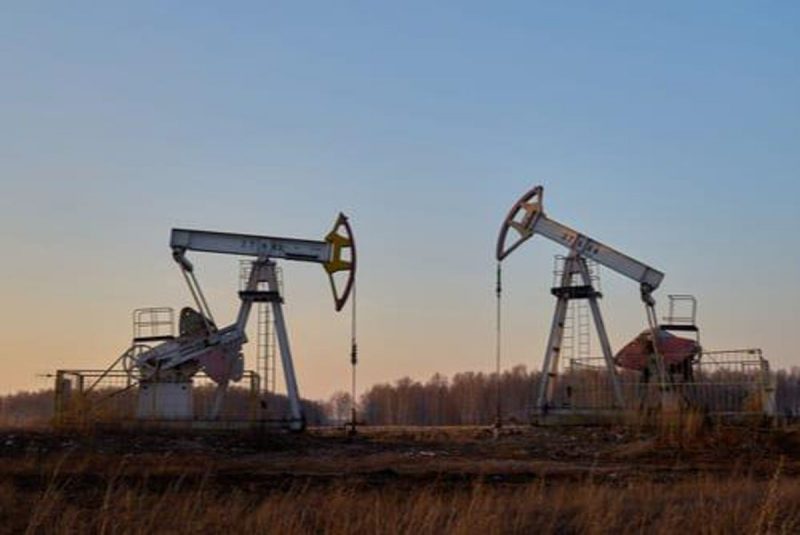Global oil supply and demand are under pressure, creating concerns that the world has reached peak oil.
The question of peak oil has popped up in headlines several times in recent decades. Over the past half century, the global oil market has cycled through various oil price highs and lows as demand has fluctuated.
The most recent major low came in response to COVID-19 lockdowns and cutbacks to air travel around the world, with prices even briefly going negative. By the fall of 2020, continued downward pressure on oil demand led the International Energy Agency (IEA) to issue a dire report about the state of the global oil industry.
Around that time, headlines across many publications warned that the market was headed toward “peak oil.” Even the world’s biggest oil producers were making that call — in fact, BP’s (NYSE:BP,LSE:BP) 2020 energy outlook suggested that peak oil had already been reached. More recently, the well-known multinational energy company said it expects oil and gas to lose supremacy in the world’s energy mix, with their share of the pie falling from 80 percent in 2019 to between 55 and 20 percent by 2050.
This same sentiment has been echoed by global oil producer Shell (LSE:SHEL,NYSE:SHEL), which said its “oil production peaked in 2019,” and it expects its output to decline by 1 to 2 percent per year.
Russia’s invasion of Ukraine has placed a spotlight on Europe’s, if not the world’s, dependency on oil — indeed, an article in E&E News poses the question, “Will the Russian invasion accelerate peak oil?”
“Energy markets and policies have changed as a result of Russia’s invasion of Ukraine, not just for the time being, but for decades to come,” according to International Energy Agency (IEA) Executive Director Fatih Birol. “Even with today’s policy settings, the energy world is shifting dramatically before our eyes.”
In a late 2022 report, the IEA forecast that oil demand will peak in the mid-2020s.
What is peak oil?
Peak oil references the hypothetical point in time when global oil supply will enter a terminal decline.
Investopedia explains that the concept of peak oil supply “is derived from geophysicist Marion King Hubbert’s ‘peak theory,’ which states that oil production follows a bell-shaped curve.” Based on his work with Shell in the 1950s, in 1962 Hubbert proposed that global oil supply would begin to rapidly decline once the extraction of new oil resources proved too difficult to achieve. The peak oil point would be reached once the rate of production dropped lower than the rate of consumption.
Hubbert’s 1962 prediction pegged 2000 as the year that global oil production would peak. What he couldn’t predict were the many advancements in oil exploration and extraction technology in the years ahead that would lead to new discoveries and unlock hitherto inaccessible oil resources in existing wells.
In more recent times, rather than supply, peak oil has referred to oil demand entering a phase of terminal decline. According to this demand-side peak oil theory, an irreversible decline in oil demand could be spurred on and accelerated by more cost-effective alternative energy sources.
What are some of the predictions related to peak oil?
In today’s world, 67 percent of oil demand is attributed to the transport of goods and people, whether by land, air or sea. Another 27 percent originates from industrial uses, such as lubricants, plastics and solvents. About 5 percent is used for residential and commercial heating, while the remainder (less than 1 percent) is used in electricity generation.
The current calls for peak oil rest on advancements in alternative energy technologies that have the ability to replace oil as the resource of choice for transportation.
One assertion that peak oil advocates make is that the COVID-19 pandemic will have a lasting impact on consumer choices — including less commuting and business travel. Those calling for peak oil also point to growing concern and action in the fight against climate change; dubbed the “green revolution,” this could include a shift away from fossil fuels to renewable energy sources and electric vehicles (EVs).
Rising consumer support, corporate and government investment in clean energy infrastructure projects, as well as advancements in large-scale energy storage and EV battery technology have been put forward as clear signs that this transition is increasingly possible.
According to the Wall Street Journal, Robert McNally, a former advisor to George W. Bush and current chairman of Rapidan Energy Group, pointed out in 2020 that several western governments were poised to leverage the pandemic “as an opportunity to rethink energy policy.”
To capitalize on this policy transformation, energy giants Shell and BP began investing in renewable energy technologies. CNBC reported that Shell built a 10 megawatt hydrogen electrolyzer at a refinery site in Germany. The largest of its kind, this system produces hydrogen using electrical energy generated from renewable sources with no carbon emissions. The company is planning to build another such plant in the Netherlands, slated to begin operations in 2025, to become “Europe’s largest renewable hydrogen plant.’
For his part, BP Chief Executive Bernard Looney said at the time that the company planned to increase its investment in renewables to as much as US$5 billion a year by 2030. Most telling is his statement in a fall 2020 report that BP will “not enter any new countries for oil and gas exploration.” BP even claimed that it had plans to keep its oil and gas production levels ‘broadly flat through 2030.’
While the COVID-19 pandemic dampened oil demand, and in effect oil prices, the ongoing Russo-Ukrainian war has subsequently pushed energy prices higher than pre-pandemic levels, resulting in record profits for the big five major oil producers, including BP and Shell. In response, it seems these two have seemingly walked back their previous commitments, according to DW News.
Recently, BP raised its oil and gas production targets, cut its previously promised emissions reductions from a range of 35 to 40 percent to a range of 20 to 30 percent by 2030; it also decreased its commitment to cutting fossil fuel production, reducing its 2030 target to 25 percent from the previous 40 percent.
The Organization of the Petroleum Exporting Countries, better known as OPEC, has predicted that oil demand will plateau after 2035, while consultancy firm McKinsey & Company forecasts that it could peak as early as 2025. McKinsey bases its outlook on the speed of the global transition to lower-carbon and renewable energy sources.
“In the past few years, we have certainly seen the energy transition pick up pace. Every year we’ve published this report, peak oil demand has moved closer,” said Christer Tryggestad, a senior partner at McKinsey. “Under our middle scenario assumptions, oil demand could even peak in the next three to five years, primarily driven by electric-vehicle adoption.”
Tesla (NASDAQ:TSLA) CEO Elon Musk seems to agree with this timeline. Tweeting a response in January to JPMorgan Chase (NYSE:JPM) CEO Jamie Dimon’s statement that the global economy will need oil and gas for at least the next half century, Musk said, “True, there will be a long tail of usage, but it will peak long before then … Peak oil demand probably happens within the next 5 years.”
Is peak oil fact or fiction?
Of course, historical calls for peak oil have not been without pushback from critics who see drops in oil demand as a natural part of the ebb and flow of a dynamic global market.
“Supply-side ‘peak oil’ theory was always wrong in the past because its proponents invariably underestimated the enormity of yet-to-be-discovered resource that lay beneath the ground in various parts of the world,” David Blackmon, an independent energy analyst and consultant, wrote in Forbes in 2020.
“In more recent years, Demand-side ‘peak oil’ theory has always managed to overestimate the ability of renewable energy sources and electric vehicles to displace fossil fuels.”
Also writing in Forbes, in 2021 energy economist Michael Lynch, a distinguished fellow at the Energy Policy Research Foundation and president of strategic energy and economic research, highlighted the rebound in automotive travel in China post-lockdown and the “growing market share for SUVs” as signals that a strong market for oil still exists.
He pointed out that the IEA’s January 2021 world energy outlook “included data showing that the market share for SUVs had doubled and tripled since 2010, including in China and India, and dwarfs that of battery EVs.” According to the IEA, internal combustion engine SUVs accounted for a record 42 percent of the global auto market in 2020.
That trend has continued. In 2021, sales of gas-guzzling SUVs growing by 10 percent year-over-year to account for another record 45 percent of global car sales. For 2022, that figure came in at 46 percent.
Although the IEA also notes that electric SUVs represented 16 percent of total SUV sales for 2022 — accounting for more than half of total global EV sales, the firm acknowledges that ”Electric SUVs are growing in popularity, but not quickly enough to offset the increasing oil consumption and emissions of the wider fleet.’
The trucking, shipping and aviation markets, which constitute the majority of today’s oil demand in the transportation sector, are expected to remain highly dependent on oil. But in the decades ahead it is possible that new alternative energy technologies could bring competition for oil products in this sector. These include large-scale energy storage systems, as well as solar and wind power systems. Emerging technologies such as 3D printing are deglobalizing manufacturing supply chains, which could reduce the need for shipping and hence bunker fuel.
Does oil still have a future in the global energy mix?
Regardless of when peak oil happens — today, next year or in the following decades — it is coming. However, global energy demand remains high, and oil’s role in meeting that demand will not disappear overnight. Rather, we’re in for a gradual decline as the world transitions to a broader energy mix with more carbon-free sources.
Perhaps Shell CEO Ben van Beurden said it best: “Even as the world decarbonizes, it will still need oil and gas for decades to come.”
Securities Disclosure: I, Melissa Pistilli, hold no direct investment interest in any company mentioned in this article.





